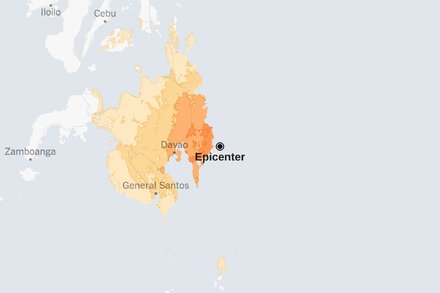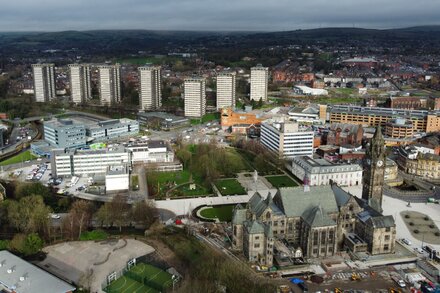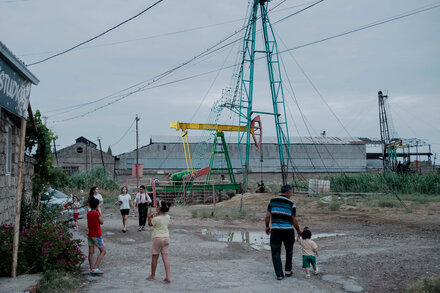A powerful 7.6 magnitude earthquake struck off the coast of Mindanao in the southern Philippines late Saturday, triggering immediate tsunami warnings for coastal communities and neighboring countries. The seismic event caused widespread shaking and prompted evacuations across the region.

A powerful earthquake with a magnitude of 7.6 struck off the coast of Mindanao in the southern Philippines late Saturday, triggering tsunami warnings for coastal communities in the region and neighboring countries. The United States Geological Survey (USGS) reported the seismic event occurred at approximately 10:37 PM local time (14:37 GMT) at a relatively shallow depth of about 32 kilometers (20 miles).
The epicenter was located in the sea, approximately 21 kilometers (13 miles) northeast of Hinatuan, Surigao del Sur province. Residents across large parts of Mindanao reported intense and prolonged shaking, with many evacuating buildings and homes as a precautionary measure.
Following the initial tremor, the Philippine Institute of Volcanology and Seismology (PHIVOLCS) issued a tsunami warning, advising residents in coastal areas of Surigao del Sur and Davao Oriental to evacuate immediately to higher ground. The Pacific Tsunami Warning Center also issued alerts for the region, including for Indonesia and Japan, though these were later downgraded or cancelled.
“Coastal areas in the provinces of Surigao Del Sur and Davao Oriental are advised to immediately evacuate to higher grounds or move farther inland,” PHIVOLCS stated in an advisory, urging vigilance among the population.
Initial reports from local authorities indicated widespread power outages in several affected areas, particularly in Surigao del Sur. While extensive damage was not immediately apparent, some structures reportedly sustained cracks, and initial assessments pointed to minor infrastructure disruptions. Emergency services began receiving calls for assistance and conducting rapid damage assessments.
Early reports suggested a limited number of casualties, primarily due to falling debris and heart attacks, with several individuals receiving medical attention for minor injuries. The National Disaster Risk Reduction and Management Council (NDRRMC) activated its response protocols, coordinating efforts with local government units to provide aid and assess the full extent of the damage.
One resident from Bislig City, Surigao del Sur, shared their experience with local media, saying, “The quake was very strong, and it lasted for a long time. We immediately ran out of the house, fearing it would collapse.”
The Philippines is situated on the seismically active “Ring of Fire,” an arc of volcanoes and fault lines circling the Pacific Basin, making it highly susceptible to earthquakes. Aftershocks, including one strong tremor with a magnitude of 6.9, continued to rattle the region in the hours following the main quake, prompting residents to remain on alert.
Authorities have urged the public to stay calm, rely on official information, and be prepared for potential further tremors as seismic activity continues to be monitored closely.
Source: Read the original article here.





